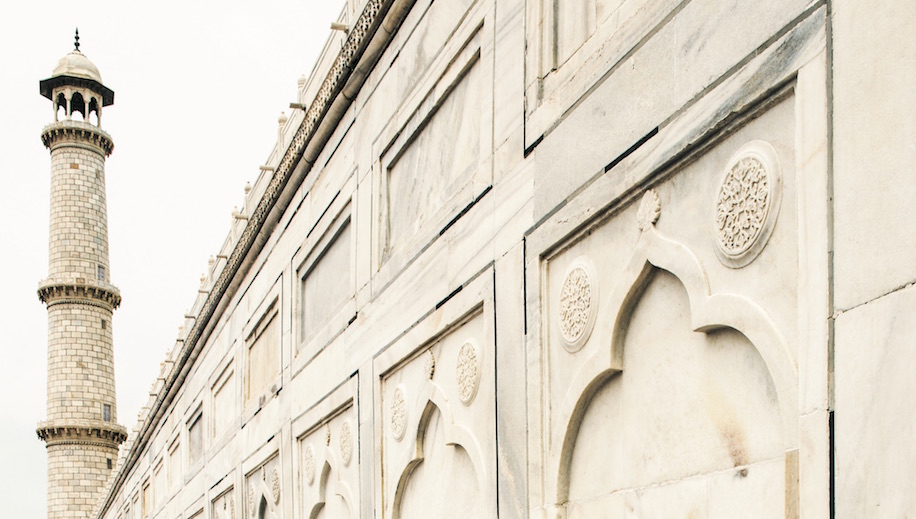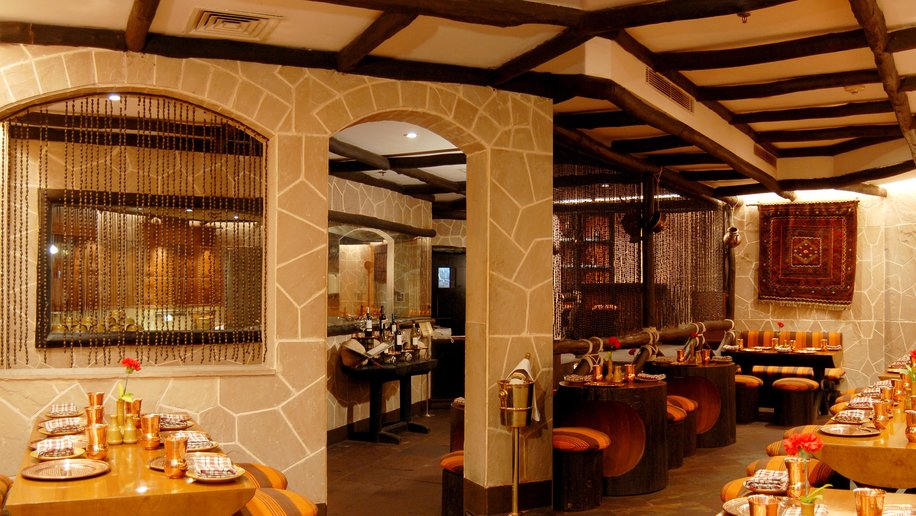1 - Taj Mahal
The Taj Mahal is synonymous with India, and for good reason. The white marble mausoleum is the tomb of Shah Jahan’s most favourite wife — Mumtaz Mahal (translates to the chosen one in arabic), who was the mother of the emperor’s 14 children. One of the children was Aurangzeb, who was notorious for imprisoning and murdering his own father. While during the 17th century, most of the Mughal architecture was built out of red sand-stone, this monument has been created using white inlaid marble and semi-precious stones. Shah Jahan was immensely fond of architecture and wanted to express his love for his deceased wife by creating a tomb that was nothing less than a spectacle. He employed 20,000 labourers that worked for a period of 20 years to build the structure. Keep in mind, machines didn’t exist during the period, and all construction was done by hand. The monument’s exteriors are decorated with calligraphy, vegetable and flower motifs and abstract forms. A notable amount of symmetry can be observed all around the cenotaph; the Taj Mahal viewed from all four sides looks identical. It is surrounded by three main gates made out of red sand-stone. The east gate is the VIP gate (foreigners enter from here too), while the west gate is usually accessed by local tourists and denizens. The mausoleum overlooks fountains and a marble bench which is known as the Lady Diana bench, as the princess took a photograph seated on this very place. There is a separate line for foreigners and local tourists (the ticket price varies too) and upon entering the Taj, one has to strain to view the interiors due to dim lighting. This has been done intentionally to avoid insects hovering around the place. A circular edifice holds the replica of the tombs, while the original ones of the emperor and his wife are kept downstairs, in an area that can’t be accessed publicly.
Timings: Every day (except Friday) — sunrise to sunset
Night — 8:30 PM to 12:30 AM (on full moon nights, two days before and two days after)
Ticket fee (day): ₹750(foreigner)/₹20(Indian)
Entry free for children below 15 years of age
Ticket fee (night): ₹750(foreigner)/₹510(Indian)
Entry free for children below three years of age
(Guides speaking German, Spanish, French, English or Hindi can be hired. The Taj Mahal is a wifi enabled zone.)

2 - Taj Ganj
Agra’s handicrafts date back to the Mughal empire. The emperors were culturally inclined and introduced the state to varied arts and crafts, which still thrive today, supporting the city’s economy and adding another feather to the city’s cultural cap. The best way to indulge in a bit of traditional street shopping is by exploring the area outside of the Taj Mahal, known as Taj Ganj. This area is a fascinating insight into the local life and trade of this city, which still reflects the artistry from the time of the Mughals. Agra is known for its footwear, marble and carpet industry and a glimpse of that can be caught here. Instead of taking home a magnet, it’s advisable to invest into a marble souvenir. Some of these are also created with semi-precious stones. Mini Taj Mahals can be purchased too, but at a much compromised level of design, of-course. Since the city receives a large number of international tourists, it’s common to be quoted higher rates. Best to find the right bargain, as shops stock similar products. Traditional footwear, known as mojdis or the famous slippers of Kolhapur, known as Kolhapuris can also be purchased here. Agra is also known for its sweet dish Petha, that is made from white pumpkins. The dessert is quite heavy and is often replaces meals for locals. Panchhi Petha (panchhipetha.com), one of the best outlets for sweets in the city is located at Taj Ganj as well. A number of cafes and restaurants with promising views of the Taj are situated around. Stick to beverages and indulge in their food absolutely at your own risk, as the dishes served at these restaurants might not be suitable for sensitive stomachs.
3 - Peshawri at ITC Mughal
Definitely not for the faint-hearted, a meal at this gem from the house of ITC hotels must not be missed. In true Mughal fashion, the world of Peshawri emulates the cuisine of the north west frontier of Peshawar (which was a part of India before partition) with its rustic ambience and non-cutlery way of dining. Upon request, the staff will help you with forks and knives, if required. It is advisable not to eat a few hours before your meal at this restaurant, in order to thoroughly enjoy it. Peshawri prides itself with a host of succulent vegetarian and non-vegetarian kebabs which are cooked after marination in a traditional tandoor (clay-pot). Try the Kastoori Kebab, made out of subtle spices and deer musk, for a light appetiser. The cuisine of this area didn’t have any gravy dishes, but the restaurant lists a Murgh Makhni to appeal to all palates and can be devoured with its classic family naan bread. Its famous Dal Bukhara is slow-cooked on a simmer through the night to attain its signature flavour is promising. ITC hotel’s Bukhara brand is only at their flagship hotel in Delhi. Peshawri is their brand name at the other properties.
Timings: Lunch — 12:30PM to 2:30 PM
Dinner — 7PM to 11:45PM
ITC Mughal, Agra; tel +91 562 4021700; Taj Ganj, Agra, Uttar Pradesh 282001, India

4 - Mehtab Bagh
Crossing a bridge to the other side of the Yamuna river is worth it, if a quiet and calm view of the Taj Mahal is on your list. The main mausoleum can get very crowded, which doesn’t allow one to soak in the magnificence of the Taj Mahal. Translating to the moonlight garden, the Mehtab Bagh is a quadrilateral complex that’s orderly maintained with narcissuses, plants and fruit trees along alongside walkways and fountains. The extreme end of the garden overlooks the Taj Mahal and the red sand-stone gates on each side. The garden must be visited at dawn or dusk to catch the Taj reflect light in the most spectacular way. The size of the garden space is the same as the Taj Mahal, and legend had it that Shah Jahan wanted to build a Black Taj at this very site to hold his tomb after he passed. Recent excavations and research have proved otherwise, as relics of a huge octagonal tank furnished with 25 fountains, a small central tank and a baradari (a building or pavilion with 12 doors designed to allow free flow of air) on the east have been found.
Timings: Every day — sunrise to sunset
Fee: ₹100(foreigner)/₹5(Indian)













